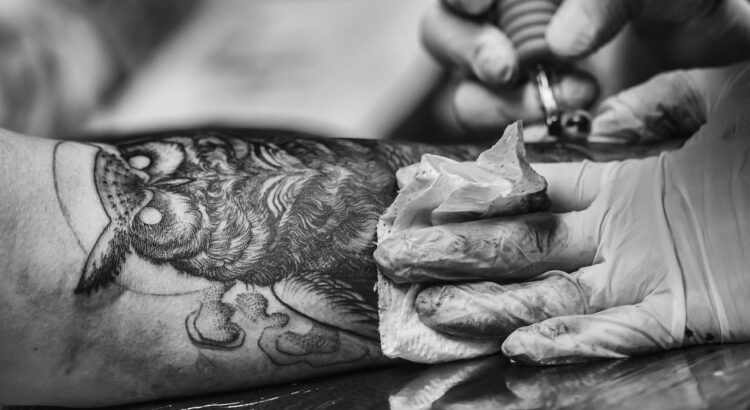Navigating Tattoo Risks: What You Need to Know Before Inking
While tattoos have become a popular form of self-expression, it’s crucial to be aware of the potential risks associated with the process. Understanding these risks allows individuals to make informed decisions and ensures a safer and more satisfying tattooing experience. Explore the key considerations surrounding tattoo risks to make your ink journey as smooth as possible.
✅ Infection Potential
One of the primary risks associated with tattoos is the potential for infection. If proper hygiene practices aren’t followed during the tattooing process or in the aftercare phase, bacteria can enter the skin, leading to infections. It’s essential to choose a reputable and licensed tattoo artist who adheres to strict sanitation protocols.
✅ Allergic Reactions
Individuals can develop allergic reactions to tattoo ink. Colored inks, particularly red, green, and blue, may contain allergenic compounds. Patch tests can help identify potential allergies before getting a tattoo. Opting for high-quality, hypoallergenic inks and discussing any known allergies with the tattoo artist minimizes this risk.
✅ Skin Conditions Aggravation
Existing skin conditions, such as eczema or psoriasis, may be aggravated by tattooing. The trauma to the skin during the process and exposure to tattoo aftercare products can exacerbate these conditions. Consulting with a dermatologist before getting a tattoo is advisable for individuals with pre-existing skin concerns.
✅ Blood-Borne Diseases
While the risk is minimal when using sterile needles and equipment, there is a potential risk of contracting blood-borne diseases such as HIV or hepatitis if proper sterilization practices are not followed. Choosing a licensed and professional tattoo studio is crucial to ensure the use of single-use, disposable needles.
✅ Scarring and Keloids
Scarring is a natural part of the tattoo healing process, but in some cases, individuals may develop hypertrophic scars or keloids. Those prone to keloid formation should discuss this risk with their tattoo artist, and placement in areas prone to keloid formation should be approached with caution.
✅ Colour Fading and Migration
Over time, tattoo ink may fade or migrate within the skin, resulting in a blurred or distorted appearance. Factors such as sun exposure, the quality of ink used, and individual skin characteristics contribute to these changes. Choosing an experienced artist and following proper aftercare helps maintain the longevity of your tattoo.
✅ Regret and Removal Challenges
Tattoo removal can be a costly and lengthy process, and complete removal is not always guaranteed. The risk of regretting a tattoo is inherent, so it’s essential to carefully consider design choices, placement, and potential long-term implications before getting inked.
✅ Pregnancy Considerations
Tattooing during pregnancy is generally considered safe, but certain precautions should be taken. It’s advisable to wait until after pregnancy and breastfeeding to avoid potential complications, such as infection or adverse reactions to tattoo aftercare products.
✅ Psychological Impact
Getting a tattoo is a permanent decision with potential psychological impacts. It’s essential to be mentally prepared for the permanence of the art on your body. Taking the time to choose a design that holds personal significance can contribute to a positive psychological experience.
✅ Choosing the Right Artist
The single most effective way to mitigate tattoo risks is to choose a skilled and reputable tattoo artist. Research their portfolio, read reviews, and ensure they adhere to strict hygiene standards. Open communication with the artist about any concerns or medical conditions is crucial for a safe and enjoyable tattooing experience.
By understanding the potential risks associated with getting a tattoo and taking proactive measures to mitigate them, individuals can confidently embark on their ink journey. Diligence in selecting a qualified artist and following proper aftercare guidelines are key to ensuring a positive and risk-minimised tattooing experience.

